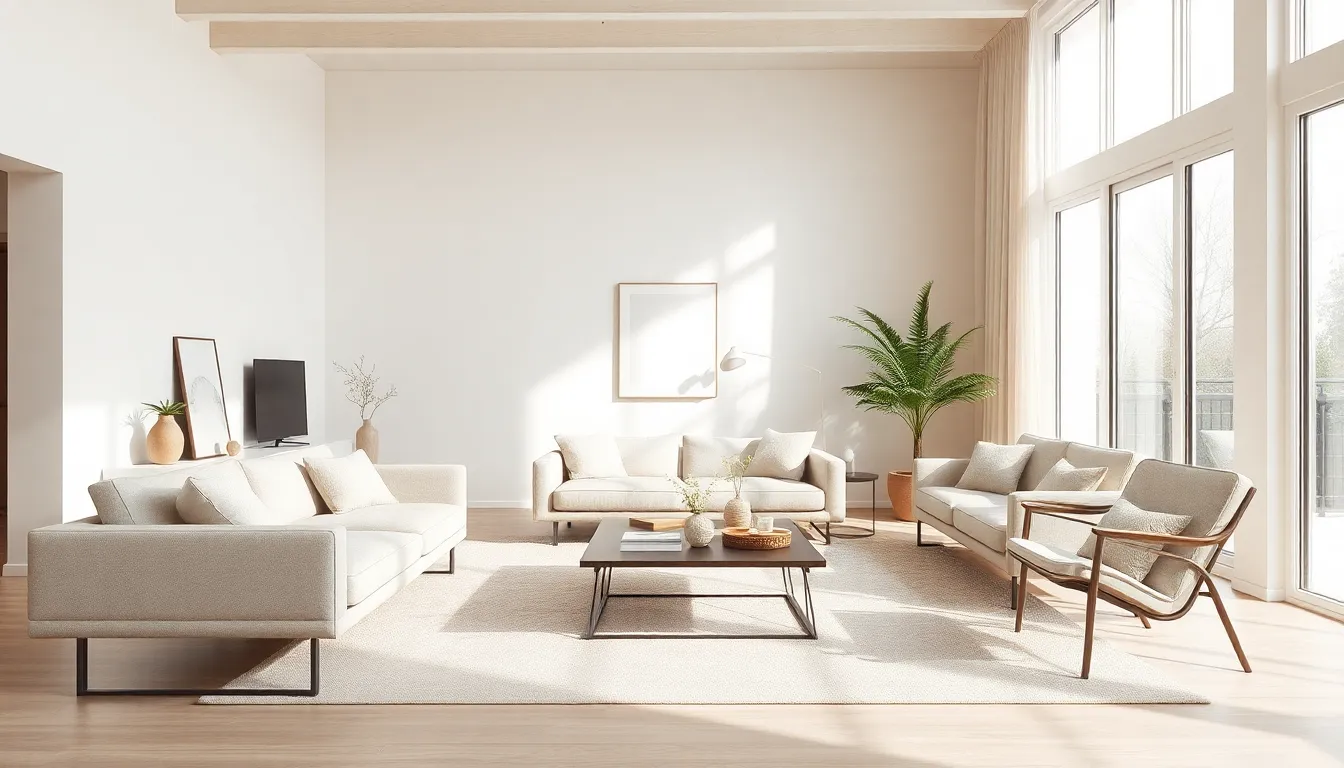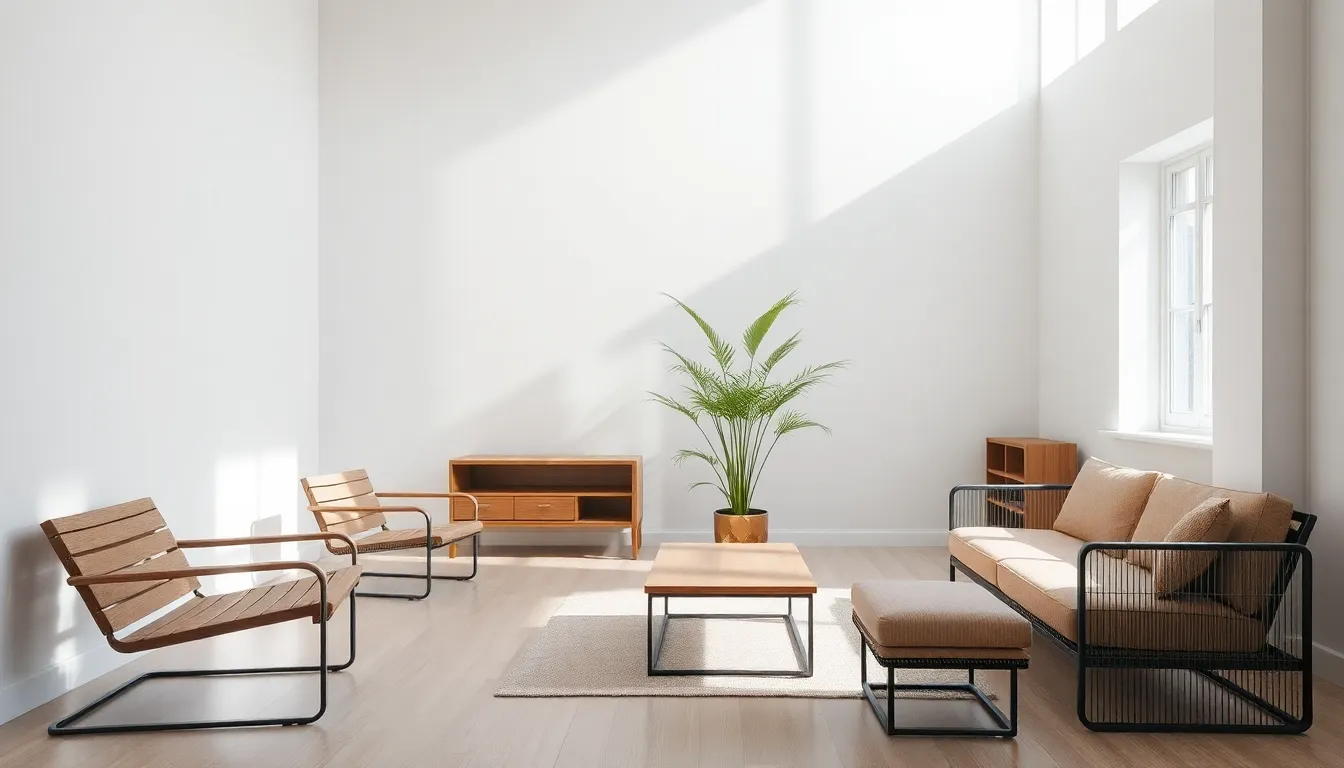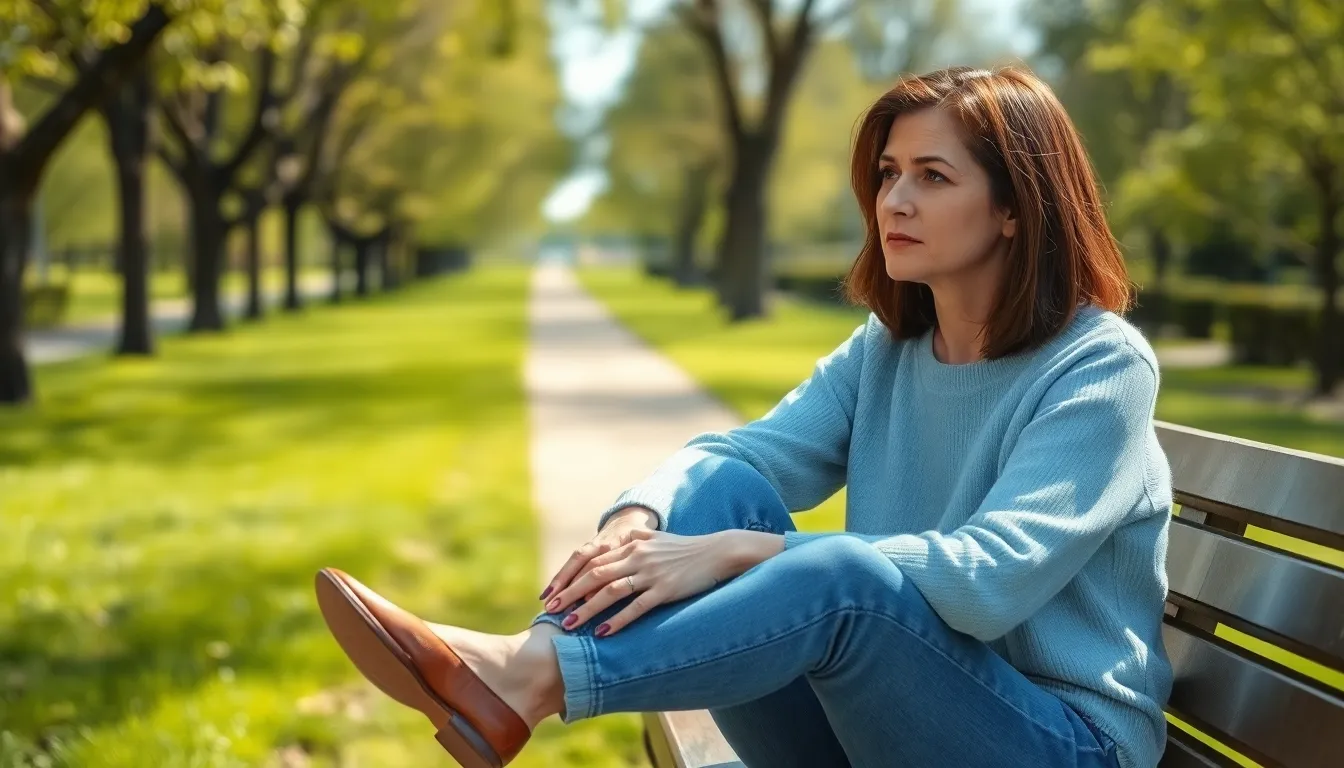In a world overflowing with clutter and chaos, the minimalist aesthetic emerges like a breath of fresh air. Imagine a space where every item serves a purpose, and less truly becomes more. This design philosophy isn’t just about tossing out stuff; it’s about embracing simplicity and finding beauty in the essentials.
Picture a serene environment where clean lines and neutral colors reign supreme, transforming any room into a sanctuary. Minimalism isn’t just a trend; it’s a lifestyle that promises to declutter both your space and your mind. So if you’re ready to swap that overflowing closet for a chic capsule wardrobe, or turn your home into a zen retreat, dive into the world of minimalism. It’s time to let go of the excess and discover the art of living beautifully with less.
Table of Contents
ToggleOverview of Minimalist Aesthetic
Minimalist aesthetic focuses on simplicity, promoting clean lines and neutral colors to create serene environments. Spaces embody tranquility by using only essential items, allowing beauty to shine through purpose. Clutter-free areas enhance mental clarity, supporting a peaceful lifestyle. Key design principles include functionality, form, and clarity, which guide choices in furniture and decor.
Individuals often embrace minimalism to transform their homes into peaceful retreats, reducing distractions and enhancing focus. The aesthetic thrives on the idea that less is more, as it encourages intentional selection of belongings. Elements like natural light and open spaces contribute to a sense of calm and openness within a room.
Neutral color palettes often dominate, featuring whites, beiges, and grays, which foster a soothing atmosphere. Textures play a significant role, balancing simplicity with warmth, while materials like wood, metal, and glass add depth without overwhelming the senses.
Minimalist aesthetic finds application in various design fields, including interior design, architecture, and graphic design. Each discipline prioritizes clarity and cohesion, ensuring that every component serves a clear purpose. The movement connects to eco-conscious living, emphasizing sustainable practices by encouraging people to purchase fewer, higher-quality items.
Incorporating the minimalist aesthetic fosters a profound sense of well-being, promoting mindfulness and intentional living. By focusing on essentials, individuals experience a shift in both physical and mental spaces, leading to increased clarity and calm.
Key Elements of Minimalist Aesthetic

The minimalist aesthetic thrives on a few defining characteristics that enhance simplicity and tranquility in design. These key elements foster clarity and mindfulness, resulting in serene environments.
Simplicity and Functionality
Simplicity serves as the foundation of the minimalist aesthetic. Every item selected holds a purpose, eliminating excess and clutter. Functionality complements simplicity; spaces prioritize practical use over decorative elements. Fixtures and furnishings often integrate multiple uses, ensuring they contribute to the overall utility. This approach not only beautifies but also simplifies the experience of everyday living. Intentional choices lead to environments that promote calmness and ease.
Neutral Color Palettes
Neutral color palettes dominate minimalist spaces. Soft whites, warm beiges, and cool grays create a soothing backdrop that enhances tranquility. Colors reflect light effectively, amplifying the perception of space and openness. They promote a sense of peace, allowing occupants to focus on their surroundings without distraction. Many minimalist designs use these colors in layered textures and materials, adding subtle depth. A restrained palette encourages cohesion, making each space feel harmonious and balanced.
Clean Lines and Shapes
Clean lines define the minimalist aesthetic, shaping the overall feel of a space. Straight and smooth edges provide an unobtrusive elegance, facilitating visual flow. Geometric shapes further contribute to the aesthetic, emphasizing simplicity and modernity. Objects and furniture often feature unembellished forms that highlight their purpose. This design technique fosters a sense of organization and control, allowing the eye to move freely within the space. Each line and shape plays a role in enhancing the minimalist philosophy of ‘less is more’.
Applications of Minimalist Aesthetic
The minimalist aesthetic applies to various fields, emphasizing simplicity and purpose. Each area benefits from embracing simplicity and functionality.
Interior Design
In interior design, minimalism creates serene environments through clean lines and open spaces. It encourages using fewer, essential furnishings, allowing for visual harmony. Neutral colors dominate, often paired with natural materials like wood or stone. Clutter-free spaces enhance relaxation and mental clarity, fostering a tranquil living atmosphere. Every piece serves a specific function, promoting practical use over extravagance.
Fashion
Fashion also adopts the minimalist aesthetic, focusing on quality over quantity. Wardrobes feature timeless pieces that serve multiple purposes, reducing decision fatigue. Neutral tones and streamlined silhouettes dominate, providing versatility and ease of coordination. Accessories stay minimal, often consisting of one or two statement items. Ultimately, this approach cultivates an elegant yet functional style.
Graphic Design
Graphic design utilizes minimalism to enhance communication through visual clarity. Clean layouts emphasize essential content, guiding the viewer’s eye without distraction. Typography plays a crucial role, with simple fonts delivering messages effectively. Vibrant colors appear strategically, ensuring that important elements stand out. The minimalist approach enhances user experience, encouraging engagement with the content.
Benefits of Embracing Minimalist Aesthetic
Embracing the minimalist aesthetic offers numerous advantages that enhance daily living. First, fewer items lead to reduced clutter, simplifying maintenance and cleaning processes. Simplified spaces create an environment that promotes focus and mental clarity, reducing distractions in both work and relaxation.
Moreover, intentional design encourages individuals to value quality over quantity. Each furniture piece or decor item serves a specific purpose, ensuring that purchases enhance the overall environment and meet functional needs. The minimalist aesthetic fosters a sense of tranquility through the use of neutral color palettes, which calm the mind and create a harmonious atmosphere.
Spaces that emphasize natural light contribute significantly to well-being. Increased sunlight not only creates an airy feel but also has a positive effect on mood and productivity. Additionally, open layouts promote freedom of movement, allowing individuals to navigate their surroundings without feeling confined.
Another benefit includes cultivating an eco-conscious mindset. Minimalism encourages sustainable living by reducing consumerist habits, leading to fewer purchases and less waste. By focusing on fewer high-quality items, individuals support ethical brands and sustainable materials, contributing to environmental preservation.
Financial savings arise from adopting a minimalist approach. Investing in fewer but more meaningful items enables budget allocation towards experiences and activities that enrich life rather than material possessions. This emphasis on experiences over things fosters deeper connections and personal fulfillment.
Mental health improvements frequently stem from minimalism. Clutter-free environments can significantly decrease anxiety levels, leading to a greater sense of control and presence in the moment. Mindfulness becomes easier to achieve in spaces designed for simplicity and calm.
Ultimately, incorporating the minimalist aesthetic results in a well-rounded lifestyle that prioritizes clarity, peace, and intentional living.
Common Misconceptions About Minimalist Aesthetic
Minimalist aesthetic often gets misunderstood as synonymous with starkness or emptiness. Critics might claim that minimalism lacks personality, overlooking the depth created by intentional design choices. Simplicity does not equate to being devoid of warmth; rather, it highlights how fewer, meaningful elements enhance emotional connection.
Another misconception suggests minimalism leads to aesthetic boredom. In reality, it cultivates a serene beauty through balanced compositions, showcasing quality over quantity. Each carefully chosen piece becomes a focal point, adding intrigue without overwhelming the senses.
Some believe that adopting a minimalist lifestyle means sacrificing comfort or functionality. However, minimalism prioritizes practicality, ensuring that each item serves a valuable purpose. Functionality thrives within this aesthetic, supporting a lifestyle that emphasizes ease and organization.
The notion that minimalism is only for certain lifestyles or incomes appears frequently. This belief limits accessibility and overlooks how minimalism adapts to various environments. People from diverse backgrounds adopt the aesthetic, demonstrating its flexibility and inclusivity.
Additionally, there’s a misconception that minimalism promotes excessive consumerism through an obsession with high-quality items. Instead, it encourages sustainable practices, advocating for well-made possessions that last longer and reduce waste. By focusing on essentials, individuals find satisfaction in owning fewer, more meaningful things.
People often confuse minimalism with a lack of creativity, thinking it hinders personal expression. Contrarily, the minimalist aesthetic encourages innovative thinking in design, prompting individuals to explore new ways of arranging spaces and personal items. Creativity flourishes as individuals distill their preferences into clear, coherent choices.
Embracing the minimalist aesthetic offers a pathway to a more intentional and fulfilling life. By prioritizing simplicity and purpose, individuals can create serene environments that enhance mental clarity and overall well-being. This approach encourages thoughtful selection of items that contribute to a peaceful atmosphere, fostering both comfort and functionality.
Minimalism’s adaptability across various design fields highlights its universal appeal, making it accessible to everyone. As more people recognize the benefits of reducing clutter and focusing on quality, the minimalist aesthetic continues to inspire a lifestyle that values clarity and mindfulness. Ultimately, this journey toward simplicity can lead to enriched living spaces and a more harmonious existence.



